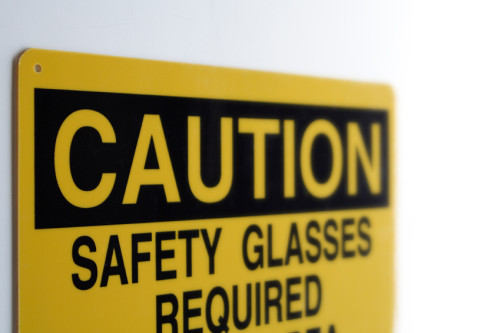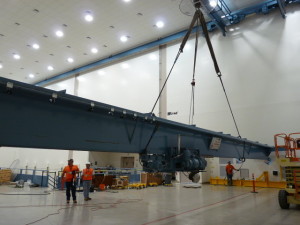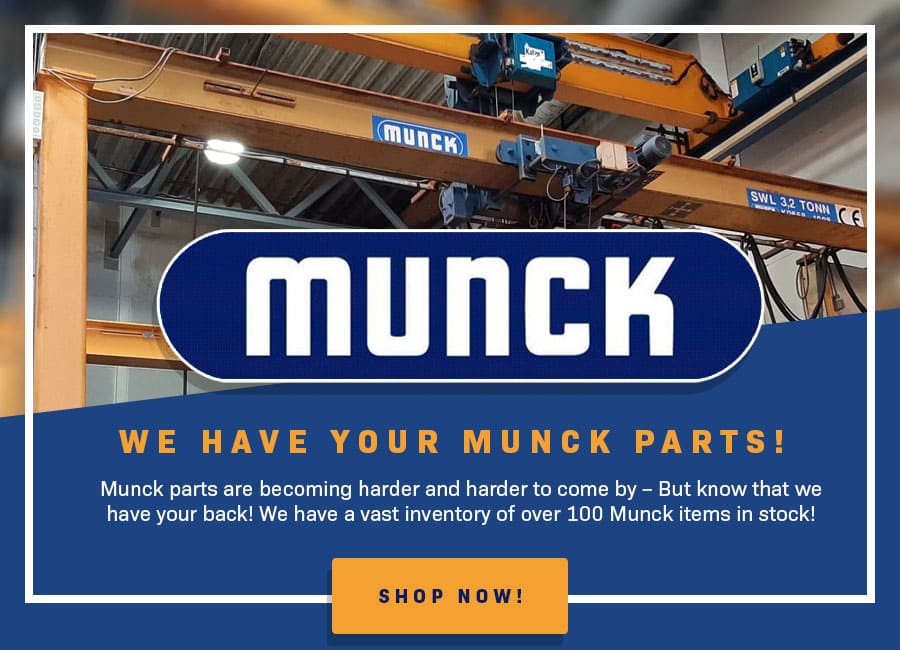Category Archive: Preventing Workplace Emergencies

Safety is a main concern on any job site. At American Crane & Equipment Corporation, we understand the importance of maintaining the highest safety standards to protect your team and equipment. According to the Occupational Health and Safety Administration (OSHA), the Crane Manufacturers Association of America (CMAA) and the American Society of Mechanical Engineers (ASME), regular crane inspections and maintenance are essential to prevent worksite accidents and ensure optimal performance. Keep reading to find out why crane inspections are so crucial.
Industrial cranes are indispensable for lifting heavy loads, but over time they can suffer from wear and tear, increasing the risk of breakdowns and accidents. To mitigate these risks, OSHA has established comprehensive inspection requirements for cranes under standard 1910.179. These inspections are designed to identify potential issues before they escalate, ensuring both the safety of your workers and the longevity of your equipment.
Types of Crane Inspections
OSHA outlines two main types of crane inspections: frequent and periodic. Each type of inspection serves a specific purpose and follows a different schedule.
Frequent Inspections
Frequent Inspections are conducted daily to monthly, depending on the crane’s usage and operational environment. These inspections focus on critical components that are prone to rapid deterioration or frequent use. Key items on the checklist for frequent inspections include:
- Maladjustments affecting the crane’s operation
- Deterioration or leaks in hydraulic systems, pumps, lines, valves, or tanks
- Deformed or cracked hooks
- Defective hoist chains
- Faulty wire rope reeving systems
- Excessive wear of components
Periodic Inspections
Periodic inspections occur at regular intervals throughout the year, typically monthly to quarterly. These inspections are more thorough and cover components that are less likely to fail suddenly but require regular monitoring. The checklist for periodic inspections includes:
- Worn tires
- Deterioration of chain drive sprockets
- Faulty or unsafe power plants
- Wear on brake and clutch systems
- Loose bearings or rivets
- Deterioration in electrical apparatus, including limit switches, push-button stations, and controller contractors
- Overstretched chains
- Inaccuracy in indicators
- Distorted bearings
American Crane’s Inspection Services
At American Crane, we offer comprehensive crane inspection services to ensure your equipment meets all OSHA standards and regulations. Our certified technicians perform both frequent and periodic inspections, providing detailed reports and recommendations to keep your cranes in top condition.
By partnering with us, you can be confident that your equipment will operate safely and efficiently, minimizing downtime and enhancing productivity. Our service and parts department is equipped to handle all aspects of crane maintenance, ensuring complete compliance with current safety codes.
At American Crane, we are your expert, craftsman, and partner in ensuring the safety and reliability of your material handling equipment. For more information on our crane inspection services or to request a quote, please contact us today.
Over the past 50 years, the Occupational Safety and Health Administration’s (OSHA) specifications for crane safety have remained relatively unchanged. To begin enhancing the training and safety opportunities in the overhead lifting industry, OSHA has recently renewed a five-year alliance with the Crane, Hoist and Monorail Alliance (CHM).
 The partnership demonstrates OSHA’s confidence in CHM as a trusted resource in an ongoing effort to increase workers’ safety. In a recent EHS Today article, OSHA’s Assistant Secretary of Labor Dr. David Michaels said, “Our alliance with CHM has been invaluable in helping to reduce and prevent serious or fatal incidents in the material handling industry.”
The partnership demonstrates OSHA’s confidence in CHM as a trusted resource in an ongoing effort to increase workers’ safety. In a recent EHS Today article, OSHA’s Assistant Secretary of Labor Dr. David Michaels said, “Our alliance with CHM has been invaluable in helping to reduce and prevent serious or fatal incidents in the material handling industry.”
To follow the example that these industry leaders have set, here are six ways that you can increase crane safety within your own facility:
- Create Accountability with Your Inspection — Develop written guidelines for your crane and hoist inspection and maintenance programs; implement this code to train every operator on proper crane equipment use and safety protocol.
- Schedule Your Inspections — Create a pre-planned schedule to stay on top of equipment functionality through preventative maintenance. Having a schedule will help to avert any breakdown repairs by ensuring that your equipment always meets the necessary safety requirements.
- Read the Manual — It may sound silly, but it is crucial that every operator has read the manufacturers’ operation manuals. Implementing this practice will add an extra level of protection at your facility.
- Conduct Pre-Shift Inspections — Crane operators should understand the applicable OSHA, national, state, and local inspection requirements for their machinery and ensure that all products are in compliance with these specifications at the start of each shift.
- Implement a Lockout/Tagout Procedure — Lockout procedures safeguard employees by cutting equipment off from the energy source before any maintenance work. This precaution helps prevent accidental or unexpected operation from stored energy, as well as the resulting risk of injury.
- Know Your Equipment’s Limits — Employees should always be aware of crane load limits as well as the capacities of each payload.
By taking these simple precautions, you can increase everyday workplace safety for your operators. To learn more about how to increase crane safety in your facility, we invite you to download our maintenance troubleshooting guide, “What Your Cranes Wish You Knew.”

When you have an aerospace critical lift that could impact your project or the environment, it’s doubly important to follow all the proper procedures for safety and compliance. Many people are unsure of the exact legal requirements and the best way to ensure compliance. Here is a brief rundown on managing critical aerospace lifts.
Identifying Critical Lifts
A lift is considered critical if it has one or more of the following characteristics:

- If loss of control over the lifted item could invoke a declaration of a site emergency per the governing regulations such as NASA-STD- 8719.9.
- If the item to be lifted is vital to the project schedule or irreplaceable.
- If the item is lost during the lift, the resulting impact on cost or schedule might jeopardize program commitments.
- If the lift occurs in close proximity to items that fit any of the definitions in items 1 through 3.
- If the load exceeds 80 percent of the crane’s capacity, it is critical. If two cranes are used and the lift weight exceeds 75 percent of the rated capacity of one of the cranes, it is also considered critical.
Aerospace Critical Lift Requirements
If your planned lift fits into any of these categories, you are required to take certain safety precautions. The precautions may vary depending on the characteristics of the lift, but almost every aerospace critical lift will require specific safety precautions.
Lift Supervisor
This person is responsible for ensuring that every member of the lift team understands their role and has the proper training. The Lift Supervisor must also confirm that the equipment has been properly inspected and has the right safety ratings to safely carry out the lift plan.
Safety Representative
The Safety Representative cannot be the same individual as the Lift Supervisor. The Safety Representative is responsible for reviewing and checking all inspections, the lift plan, and must be on site during the lift to monitor the process and ensure adherence to the plan.
Critical Lift Plan
The Critical Lift Plan includes both a Hazard Report and a Lift Procedure. The entire team, but especially the Lift Supervisor and the Safety Representative should be familiar with the details of the plan.
Safety Review Meeting
Before undertaking the lift, the team must hold a Safety Review Meeting to ensure that all team members have a firm grasp on their roles and all lift procedures. The meeting can be held up to two weeks prior to the lift for very complex lifts, but two to three days is more common.
Equipment Requirements
For aerospace critical lifts, you must use equipment rated to handle the necessary load plus a margin of error. The equipment must meet these requirements whether it is leased or owned and must meet minimum load rating for every item used in the lift, including rigging, jigs, cables and hoists.
American Crane Aerospace Equipment is designed to meet the requirements of aerospace critical lifts. American Crane Critical Lift Cranes are designed for durability, reliability and safeguarding equipment during lifts and to comply with appropriate industry guidelines. With over 40 years of experience designing and building the industry’s most respected cranes, American Crane products offer custom design and fabrication and a complete in-house quality assurance program to comply with standards. Before shipment, all cranes are completely tested and fully assembled to meet CMAA duty cycle requirements.
Inspections
You must have certificates of inspection and original rating certificates for all equipment. These should be part of the Lift Plan and reviewed and validated in the Safety Meetings.
If you are responsible for managing a project or program that may include an aerospace critical lift, consider working with the experienced team at American Crane. Our team of experts provide high quality equipment, safety and reliability in every aerospace critical lift.






 The partnership demonstrates OSHA’s confidence in CHM as a trusted resource in an ongoing effort to increase workers’ safety. In a recent
The partnership demonstrates OSHA’s confidence in CHM as a trusted resource in an ongoing effort to increase workers’ safety. In a recent 


